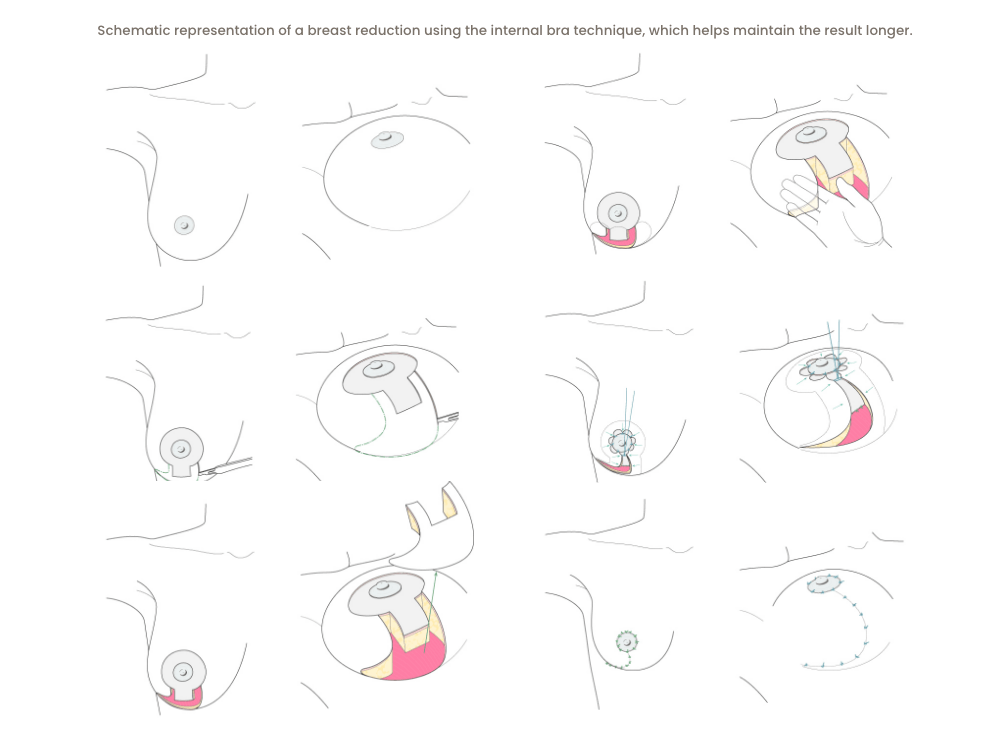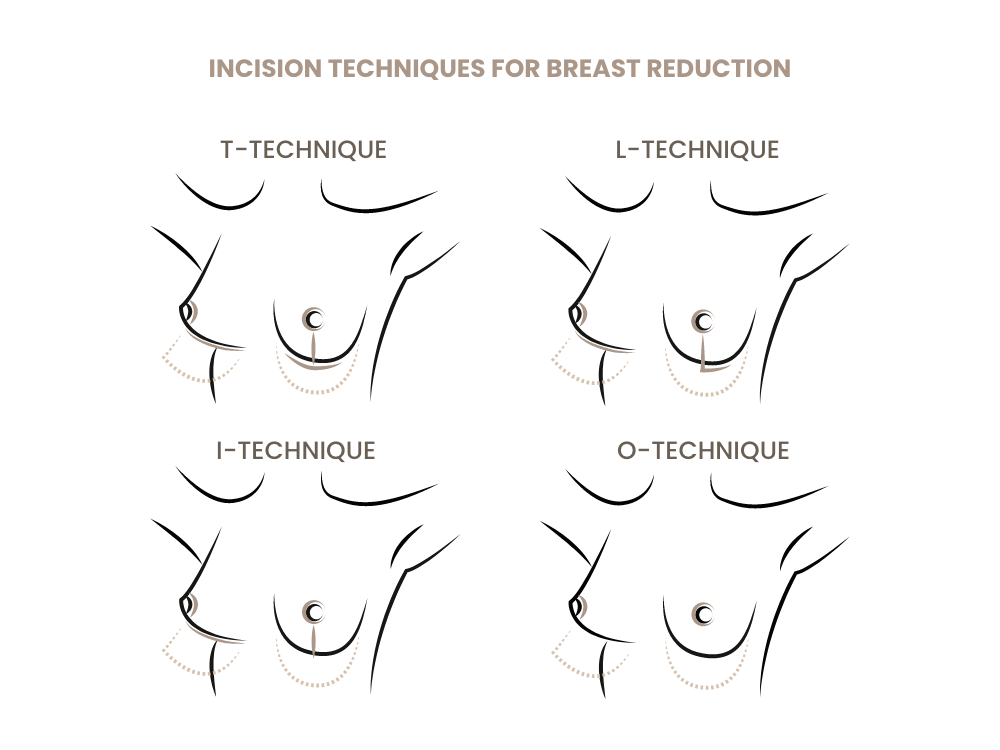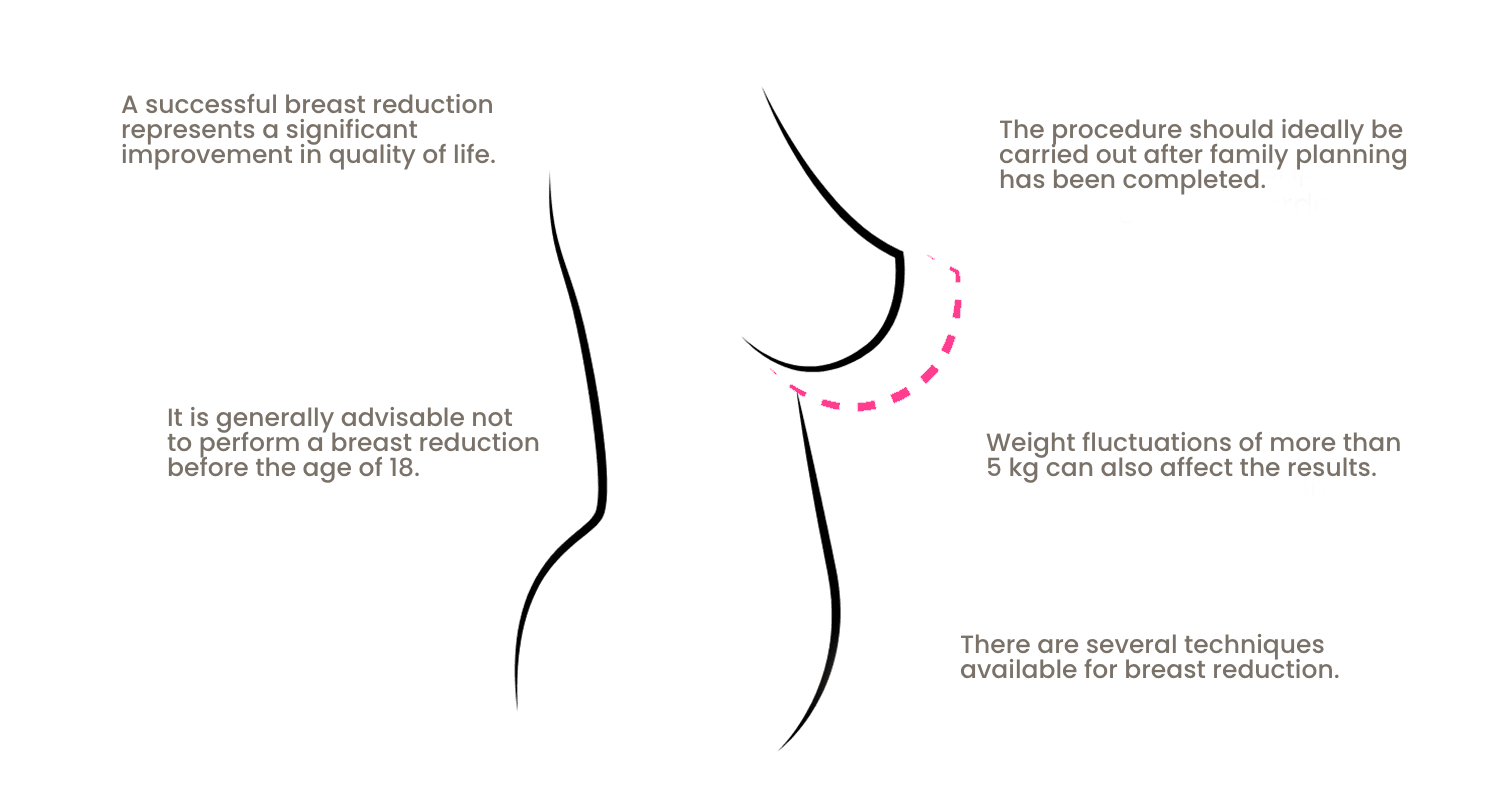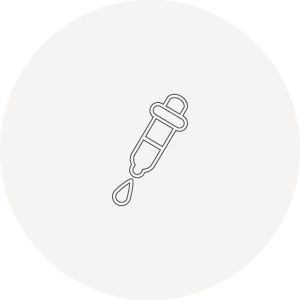Important information and facts about breast reduction
There are well over 100 different surgical methods that fundamentally differ in the incision pattern and the way tissue is removed. Most surgeons master 4–5 different techniques, which they use depending on the anatomical conditions of the breast. For patients seeking advice, it is usually difficult to influence the choice of surgical technique.
To help you better understand the advantages and disadvantages of the different methods, I would like to name the most important parameters that play a role in a breast reduction (reduction mammaplasty):
- Scar pattern
- Type of blood supply to the nipple and areola
- Shaping of the breast
- Durability of the surgical result / creation of an internal bra
- Preservation of nipple sensitivity and responsiveness
During your consultation, you should discuss with your surgeon which of these aspects are particularly important to you.
When using scar-saving techniques, the inner part of the inframammary fold remains untouched, allowing the wearing of low-cut clothing. Unfortunately, these methods can rarely be used for very large breasts. Furthermore, there are techniques that tend to preserve nipple sensitivity better than others but have the disadvantage of offering less control over the shaping of the breast.
Over the past 25 years, methods have been developed to improve the long-term durability of results, characterized by the creation of an internal bra. This technique transfers the weight of the breast from the skin to the internal bra, counteracting sagging over the years. I have also studied this topic in depth and modified a well-established method (the B-technique) to allow for the creation of an internal bra.
For most patients, the scar pattern is of great importance; however, I would like to point out that from an aesthetic perspective, an appealing breast shape is significantly more important than shorter scars.

What should be considered during planning?
- The procedure should ideally be performed only after family planning has been completed. A pregnancy after breast reduction is generally possible; however, it should be expected that the achieved breast shape may deteriorate again due to significant size changes during pregnancy.
- Weight fluctuations of more than 5 kg can also negatively affect the result; therefore, you should have a body weight at the time of surgery that you feel comfortable with and can maintain.
For those affected, a successful breast reduction represents an enormous improvement in quality of life. In addition to relieving back pain, pressure marks from bra straps, and significant posture problems, this procedure can often also eliminate the stigmatizing appearance and the associated feelings of self-consciousness.

Breast reduction summarized
Some important considerations on the topic of breast reduction.









